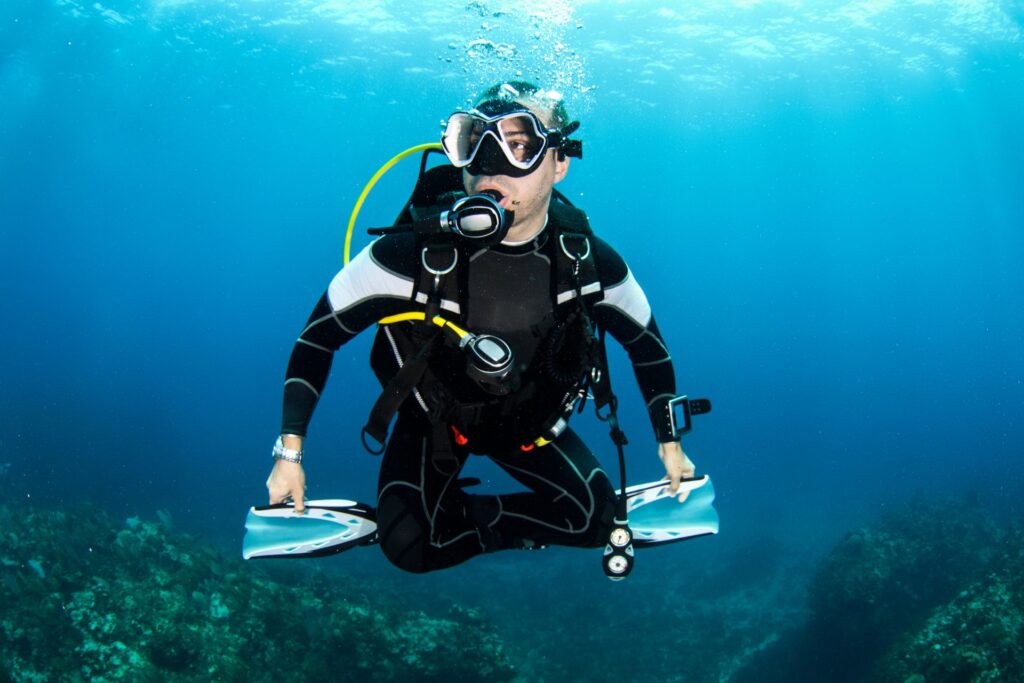Diving is a fascinating activity that allows us to explore the wonders of the underwater world. Whether you are a beginner or an experienced diver, buoyancy control is one essential skill that can greatly enhance your diving experience. The ability to achieve neutral buoyancy and effortlessly glide through the water is truly an art form. In this blog post, we will delve into the importance of buoyancy control, explore the techniques to master this skill, and highlight its benefits to divers.
Understanding Buoyancy
Buoyancy is the force that enables objects to float or sink in a fluid. In diving, achieving neutral buoyancy is crucial, allowing divers to hover effortlessly at any depth. This skill helps preserve the delicate marine environment, conserves energy, enhances safety, and enables divers to approach marine life with minimal disturbance.
Mastering Buoyancy Control
- Proper Weight Distribution: The first step in mastering buoyancy control is to ensure you have the correct weight distribution. Carrying too much weight can make it difficult to maintain neutral buoyancy while carrying too little weight can result in uncontrollable ascents. Regularly reassessing your weight requirements based on the type of exposure suit and equipment you use is important.
- Practice Breathing Techniques: Your breathing pattern plays a significant role in buoyancy control. Slow, deep breaths will increase your buoyancy while exhaling slowly will decrease it. Practice breathing exercises such as the “fin pivot” to fine-tune your buoyancy control skills and better understand how breathing affects your position in the water.
- Mastering Finning Techniques: Efficient finning techniques contribute to buoyancy control. Learn different finning styles, such as the flutter kick and frog kick, and practice them to minimize your movements and maintain a streamlined position. This improves your control and reduces the risk of damaging fragile marine life.
- Utilize Buoyancy Control Devices (BCDs): BCDs are integral to buoyancy control. Understanding how to use your BCD effectively, including adding or releasing air, is crucial for maintaining neutral buoyancy. Regular practice and familiarity with your BCD will help you easily achieve precise adjustments.
Benefits of Buoyancy Control
- Conservation and Respect: Mastering buoyancy control allows divers to minimize their impact on the underwater environment. By hovering neutrally buoyant, divers can navigate through fragile ecosystems without causing harm or disturbing marine life, promoting responsible and sustainable diving practices.
- Enhanced Safety: Proper buoyancy control enhances diver safety by minimizing the risk of accidental ascents or descents. It allows divers to maintain a comfortable depth and position, ensuring better control during emergencies and efficient use of their breathing gas supply.
- Improved Photography and Videography: Buoyancy control is particularly important for underwater photographers and videographers. By maintaining a steady position, divers can capture clear, stable images and videos. This skill opens up opportunities to document the underwater world more professionally and artistically.
- Overall Diving Enjoyment: When you have mastered buoyancy control, diving becomes a more immersive and enjoyable experience. The feeling of effortlessly gliding through the water, observing marine life up close, and exploring underwater landscapes is unparalleled. Buoyancy control allows you to focus on the beauty around you, free from distractions caused by improper positioning.
Conclusion
Buoyancy control is a fundamental skill for divers of all levels. It requires practice, patience, and a deep understanding of the underwater environment. By mastering this art, divers can conserve the marine ecosystem, enhance safety, and unlock a new level of enjoyment and appreciation for the underwater world. If you want to refine your buoyancy control skills further, consider taking the Advanced Open Water course. This course provides an opportunity to practice various diving techniques, including buoyancy control, under the guidance of experienced instructors. So, embrace the art of buoyancy control, enroll in the Advanced Open Water course, and let it take your diving adventures to new depths. Happy diving!


